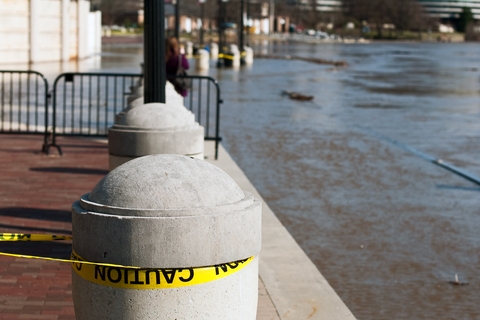As temperatures continue to rise around the world, weather patterns become more unusual and unpredictable. Studies indicate that climate change will lead to more frequent and intense weather events, such as severe storms resulting in flooding. Rising sea levels alone are leading to more floods and higher storm surges.
Australia has experienced several major flood events in recent years, including Lismore and south-east Queensland in early 2022, and many areas of metropolitan and regional Victoria in late 2022. The increase in these catastrophes has put a spotlight on the complexities of flood and storm-related insurance and coverage considerations.
Storm versus flood
To better understand the intricacies of weather-related insurance cover, it important to distinguish between the meteorological events of “storm” and “flood”.
A “storm” is a violent disturbance of the atmosphere that brings with it high winds, rain, thunder, lightning and in some cases, snow or hail. On the other hand, “flood” is generally proximately caused by heavy rainfall over short period, resulting ““in the inundation of normally dry land by water escaping or released from the normal confines of any natural watercourse or lake (whether or not altered or modified), reservoir, canal or dam”, (Zurich Mark IV Industrial Special Risks Policy) especially over what is normally dry land.
Despite the nexus between “storm” and “flood”, they are defined as separate events, as the latter is often specifically excluded, or subject to a policy sub-limit.
When assessing a flood or storm claim, the general approach by most insurers is to engage a hydrologist to undertake a site-specific assessment into the source of water causing damage to gauge whether it was caused by storm or flood. Hydrologists are experts in determining how a home or property was inundated and use weather data and site-specific insights, such as locality to water sources, to help with their identification. They provide a hydrology report to the insurer which determines the primary case of water inundation to make a claim decision.
Managing a major loss
When the Maribyrnong River flooded in 2022, water inundated premium villas and stylish apartments on the riverbanks. When water levels rose between 0.5 metres and 1.2 metres across the site, residents were evacuated from their units and the access to their community centre was restricted.
Sedgwick’s team of adjusters — accompanied by restorers, a hygienist and a building consultant — were quickly on site and assessed the scale of loss, scoping requirements and initial reserving. It became apparent that the claim would likely exceed the limit of liability — a clause in an insurance policy that provides an overall limit on liability for ‘flood’ loss or damage.
A strategy was developed with all parties to prioritise reinstatement which prevented mould issues across the site and minimised a significant escalation of the claim amount. The collaboration and presence of our adjusters, restorers, consultant and hygienist led to a swift response and resolution of the claim. Having our team on site several times a week over the four-week restoration period was also key to our response, as it provided the insured with reassurance that everything was being managed efficiently.
Key takeaways
Regardless of the size, scope, or location – from a cyclone resulting in storm surge and severe winds or a once-in-a-generation flood event – Sedgwick’s experienced catastrophe specialists mobilise quickly to assess and manage disaster-related claims. When it comes to storm and flood damage, establishing the source of water inundation is crucial. We ensure a prompt site inspection is undertaken with the insured, and that a hydrologist is engaged should there be questions regarding causation. Our adjusters also engage restorers, hygienists, engineers, building consultants and forensic accountants should there be a requirement to do so. Our catastrophe response team will work with stakeholders to accurately determine coverage, and provide appropriate, insightful reporting and analysis throughout the life of the claim. When a catastrophe occurs, clients can also access our on-demand network of professionals to scale their operations and facilitate faster claims resolution.
Learn more > read our brochure or contact [email protected]

